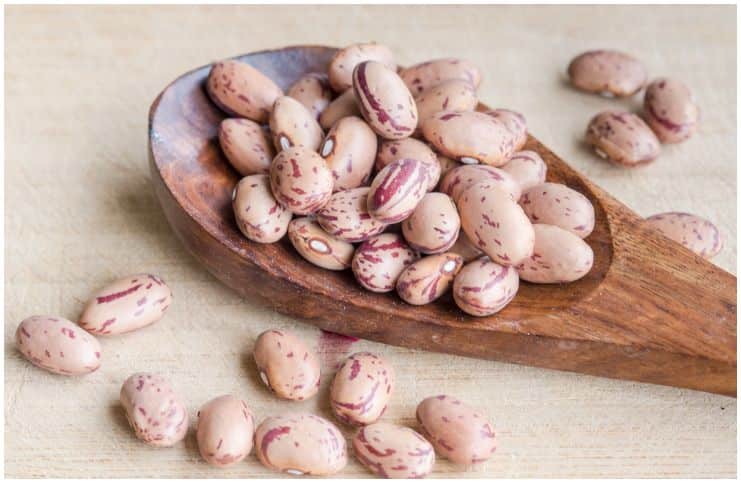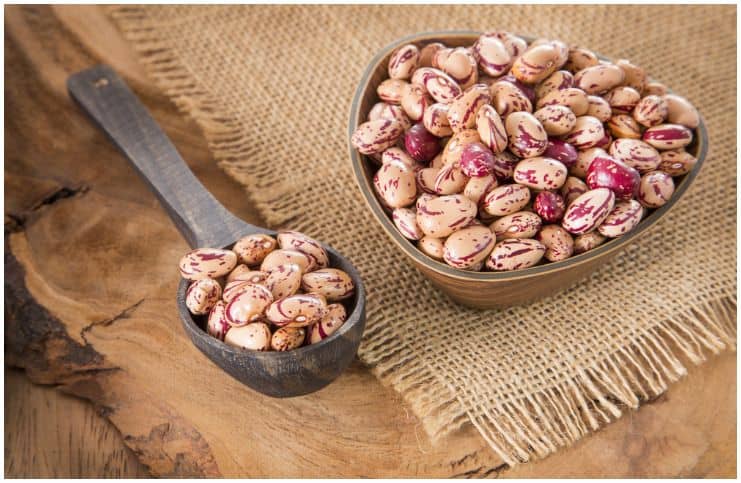Black Beans
Black turtle beans, better known as black beans, are members of the common bean family with the scientific name – Phaseolus vulgaris. Currently, they are an important staple in the cuisines of Brazil, Mexico, Guatemala, Cuba, and the Dominican Republic.
Nutritional Profile
They are a good source of protein, minerals (such as – magnesium, iron, zinc, calcium, potassium, phosphorus, copper, and selenium), vitamins (including – folate, thiamin, riboflavin, pantothenic acid), dietary fiber, and quercetin (which is a powerful antioxidant).
Health Benefits
Protein
They are a remarkable source of protein (100g contains 8,9g of protein which is 18 percent of the recommended daily intake). You should remember this when looking for a meat substitute. However, unlike red meat, they are saturated fat and cholesterol-free.
Protein is essential to the human body to function properly as well as for healthy growth. Moreover, protein is involved with muscular and cellular health and is also engaged in the functioning and production of enzymes.
Fiber
They are high in fiber, 100g containing 8,7 g which is about 35 percent of the daily recommended intake of dietary fiber. These beans contain both soluble fiber (that lowers LDL and total cholesterol and blood sugar levels) and insoluble fiber (that helps improve digestive-tract functioning, thus, preventing constipation).
Antioxidants
They contain a high concentration of anthocyanins, like – petunidin, delphinidin, and malvidin. Anthocyanins are a type of flavonoid, a special class of plant compounds with strong antioxidant effects.
It’s very beneficial to consume foods high in antioxidants because they not only help protect the human body from various types of diseases, but antioxidants also help keep the body looking good by preventing premature aging. 100 grams of these beans contains approximately 214 mg of anthocyanins.
Heart Health
The black turtle bean‘s potassium, dietary fiber, vitamin B6, folate, and phytonutrient content, coupled with its lack of LDL cholesterol and saturated fat, all support heart health. More importantly, the anti-inflammatory and antioxidant properties in these beans directly combat oxidative stress, considerably reducing the risk of heart disease.
Bone Health
Osteoporosis is estimated to affect more than 200 million women worldwide, which is about 10 percent of women aged 60, 20 percent of women aged 70, 40 percent of women aged 80 and 66 percent of women aged 90.
The high content of minerals, like – calcium, phosphorus, manganese, magnesium, molybdenum, and zinc, helps maintain elasticity and strength of joints and bones, thus, preventing osteoporosis.
Diabetes
With a low glycemic index (about 30), these beans contain a beautiful combination of protein and complex carbohydrates. Because of this, they are digested slowly, which helps keep blood sugar stable and may curtail irritability and fatigue.
According to numerous studies, replacing rapidly-digested carbohydrates with legumes (including chickpeas, lentils, green peas, and other types of beans) can improve glycemic control in patients with diabetes.
For example, the fiber contained in these beans is beneficial for people who are suffering type 1 and type 2 diabetes. In type 2 diabetes mellitus, the fiber content will help in improving the insulin tolerance and increasing the insulin, while in type 1 diabetes, the fiber contained in these beans will help in lowering the blood sugar levels.
Pinto Beans

These beans have scattered reddish brown colors and a beige background such that they look like painted works (the word ”pinto” literally translates as ”painted” from Spanish). Presently, they are the most popular beans in Mexico and the United States.
Nutritional Profile
They are rich in vitamins (such as – vitamin K3, thiamin, niacin, vitamin B6, vitamin E, folate, pantothenic acid), minerals (including – phosphorus, magnesium, iron, manganese, potassium, iron, copper, zinc, selenium, and molybdenum), dietary fiber, and protein.
Health Benefits
Protein
Protein (they have 9g of protein which is about 18 percent of the daily recommended intake) is necessary for every function in the human body since it is involved in the repairing and regeneration of cells. Furthermore, protein is useful in managing body weight due to the fact that it increases the satiety levels, hence, preventing overeating and hunger.
Fiber
100g of boiled beans provides 9 grams of dietary fiber (both soluble and insoluble) or 36 percent of the daily recommended intake based on a 2,000-calorie-a-day diet.
According to research, insoluble fiber not only helps to prevent constipation and increase stool bulk but also to prevent digestive disorders, such as – diverticulosis and irritable bowel syndrome. Soluble fiber helps to lower LDL and total cholesterol, process fats, and slows the release of sugar into the bloodstream.
Antioxidants
According to the American Journal of Clinical Nutrition, these beans contain kaempferol, a potent flavonoid known to help lower the inflammations in the body as well as prevent some forms of cancer. Flavonoids are the phytonutrients in plant-based food products that commonly contribute to the color of the foods.
Heart Health
Folate (also known as vitamin B6 and different from its synthetic version – folic acid) and magnesium help keep a healthy level of homocysteine. This is quite important because an increased value of homocysteine is linked with a risk factor for heart disease.
More importantly, a few studies concluded that these beans may lower total and LDL cholesterol levels. Cholesterol is a necessary fatty substance that gets carried around in the blood. Nevertheless, having too much LDL cholesterol may cause fatty material to build up and clog the arteries, and ultimately leads to a serious condition, called – atherosclerosis.
Diabetes
As we know, these beans are rich in dietary fiber; thus, they help to restrain the blood sugar level from rapidly rising after a meal (especially after consuming foods high in fats – because the liver transforms fat into sugar).
Bottom Line – Black Beans vs Pinto Beans – Which Are Healthier?
They have approximately the same amount of protein, dietary fiber, folate, thiamin, and minerals. However, we believe that black beans are healthier due to their content of anthocyanins.
Important Tip
Cooking the dried beans correctly lowers the risk of gas and bloating from bean consumption.
Besides, tannins and phytates are naturally occurring compounds found in all legumes. Soaking and sprouting the beans helps to reduce these compounds considerably (more than 90 percent), making these beans less gas-forming and more digestible.
